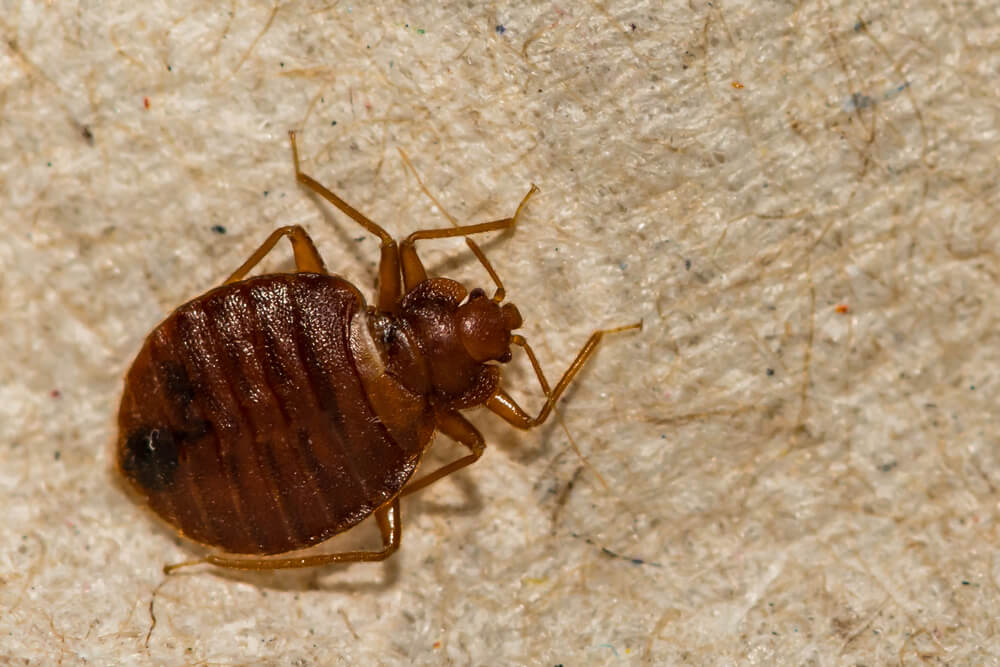Knowing what bed bugs look like is important to stop an infestation early. Unfortunately, there are many types of bugs that look similar to bed bugs. It can be hard to tell a bed beg from some types of beetles and other bugs. If you’re wondering “what do bed bugs look like?” then the answer may be the difference between a safe home and a full-blown infestation.
What Do Bed Bugs Look Like?
According to the Environmental Protection Agency, there are several characteristics you can use to identify an adult bed bug, including:
- Roughly the size of an apple seed
- The body is brown if not fed recently, and brownish-red if fed recently
- Have a long-flat, oval-shaped body (although they will be plump if they have fed recently)
- The body has a three-segment beak, wings that aren’t used for flying, and short golden hairs
- Have a musty odor that’s produced through scent glands
Younger bed bugs are smaller and often translucent or light yellow. They can even be completely invisible depending on their size and coloring.
Bed bug eggs, which are often found in the same area as the bed bugs, are the size of a pinhead. They are pearl-white and they have a black dot if they’re more than five days old.
You may be wondering what do bed bugs look like if you’ve found a bug that matches this description. The musty smell produced by bed bugs is a clear indicator, as no other bugs produce this same smell.
How to Know if You Have Bed Bugs
If you’ve found a single bug, then your house has the potential to develop into a full-blown infestation, or might already be infested.
Your next step after finding a single bed bug is to find more of them to verify the infestation. Instead of having nests like many other types of bugs, they tend to live in groups in various hiding places. Some of the common hiding places to check are:
- Mattresses, box springs, and certain types of headboards so that they have easy access to feeding on people
- Under furniture or in the crevices between cushions
- In piles of clothing that haven’t moved for a while
- Any other place that is dark and makes them feel like they will be protected
Another way to know whether or not you have bed bugs is to consider whether you’ve been waking up itching lately. Bed bugs feed by piercing the skin and withdrawing blood. The bites themselves are typically painless, but then they turn into small welts that itch. The welts are red and protrude slightly.
It’s entirely common for people to attribute morning itchiness to mosquitos, fleas or any other type of bug bite that might itch. The best way to confirm that it’s a bed bug bite is to conduct a thorough search of the areas mentioned above to look for a group of them.
People often wonder what do bed bugs look like, but the real question often needs to be what does an infestation of bed bugs look like. Here are a few things to look out for if you suspect an infestation:
- A strong, offensive odor that emanates from the bed bugs’ scent glands
- Fecal spots, shedding skin or egg shells in crevices, indicating recent bed bug activity in that area
- Dark, rusty colored spots of bed bug excrement on mattresses (often corners), walls or bedding
- Blood stains on pillowcases or sheets
If you’ve found a bed bug hiding place, have been waking up itching or noticed any of the above signs, then it’s time to take action.
What is the Bed Bug Lifecycle?
Bed bugs go through five stages of life before they are considered adults. Unfortunately for us, they start feeding on blood right as they hatch, since that is their sole diet.
Bed bugs are initially white or translucent when they emerge from their eggs. By the time they reach their second stage of life, they will have gained some color. For the rest of their lives, they will have varying levels of brown mixed with a translucent color.
If you’re wondering what do bed bugs look like, then the main thing to know about the bed bug life cycle is their life span. A single bed bug can live from six to 12 months with access to a constant host. Without a host, they can still live between 20 and 400 days, depending on temperature and humidity. This means you can’t just wait an infestation out, you need to exterminate them immediately.
What to Do if You Have Bed Bugs
You have your work cut out for you if you have bed bugs. Here’s what to do:
- Remove all bedding and wash it with hot water, then use the highest dryer setting twice
- Stuffed animals and shoes also need the same treatment
- Scrub your mattress with a stiff brush and then vacuum it
- Also vacuum the floor surrounding your bed
- Encase the mattress and box spring in tightly woven covers to prevent bed bugs from leaving or entering. You’ll need to keep this covering on for over a year before removing it. This covering can be found online and in many retail stores.
- Remove clutter from around the bed, and give your clothing the same washer/dryer treatment
Your mattress may be at the end of its life if the infestation is too severe. You may need to throw it out, thoroughly clean the rest of your home, and then buy a new mattress.
We also strongly recommend using The Cryonite Machine to exterminate any bed bugs that you may have. If you find them in groups, using our machine is a safe way to remove bed bugs without having to introduce any harmful chemicals into your home. Learn more about our fast and effective non-toxic method by contacting us today.

